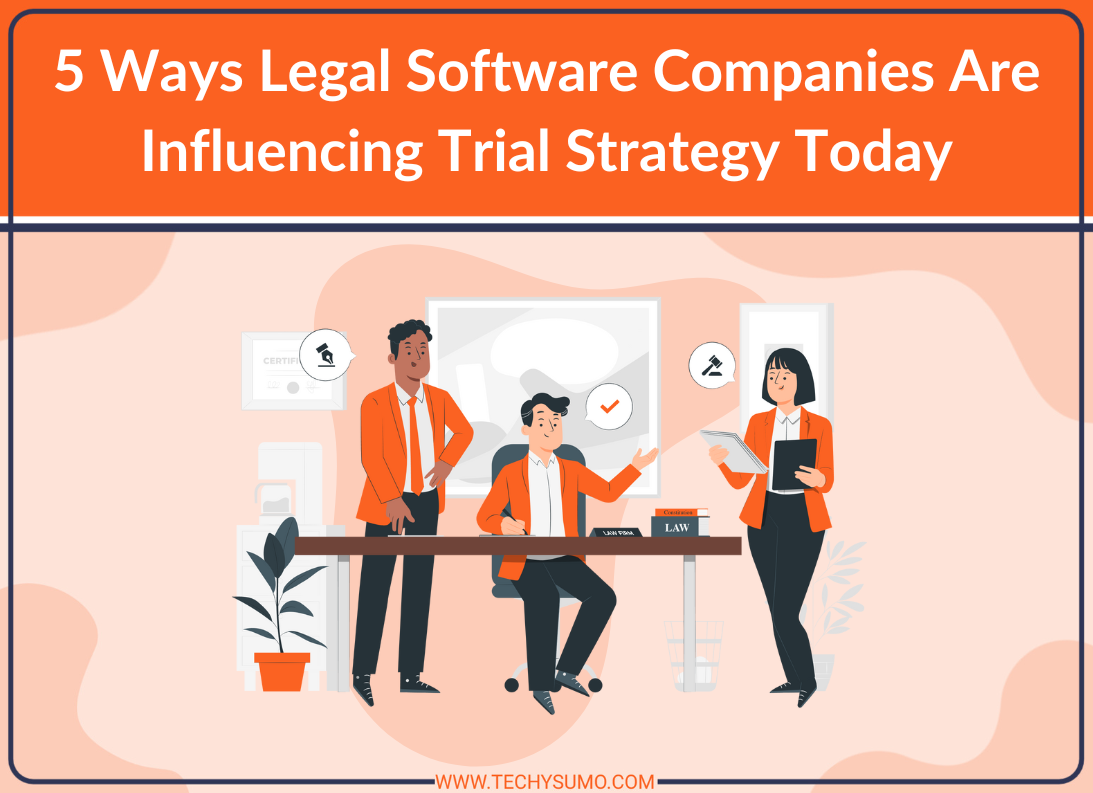The evolution of legal practice now includes tools and platforms that support trial preparation and execution. Behind the scenes, digital innovation is helping teams streamline how cases are analyzed, presented, and decided. Software companies are introducing capabilities beyond case management and into the heart of courtroom strategy.
Table of Contents
- Ways Legal Software Companies Are Influencing Trial Strategy
- The Role of Software Companies in Strategic Preparation
Ways Legal Software Companies Are Influencing Trial Strategy
1. Structuring Evidence Presentation Through Real-Time Analysis
Legal software companies offer features that allow attorneys to analyze testimony and evidence in real time. These platforms structure case narratives by highlighting patterns and inconsistencies as proceedings unfold.
This immediate feedback can influence how attorneys frame cross-examinations or pivot during argument delivery. With rapid data retrieval and tagging, teams can shift their approach based on courtroom dynamics rather than fixed outlines prepared weeks before.
2. Informing Jury Selection with Behavioral Insights
Some platforms are enabling more informed decisions during voir dire. With data-informed models and public record analysis, trial teams can evaluate potential jurors in structured ways. This adds another layer to jury profiling. Past voting patterns, demographic data, and digital behavior trends can all inform strategy.
Factors often considered during evaluation include:
- Employment history and familiarity with legal matters
- Views on policy or regulatory topics
- Experience with legal proceedings, either directly or indirectly
- Types of media regularly followed or trusted
- Group memberships or patterns in community involvement
Using these insights, teams can structure arguments and narrative tones that may align more effectively with juror disposition.
Also Read
3. Enhancing Storytelling Through Visual Integration
Digital storytelling has become a key part of courtroom presentation. Many legal teams now use visual timelines, interactive exhibits, and 3D reconstructions. Software tools make it easier to assemble this material in formats that feel seamless in court.
Legal visuals are no longer static slides but responsive, multi-layered exhibits. These elements help clarify complex arguments, especially in technical or multi-party litigation. This transformation also helps judges and juries process key facts with better retention.
4. Creating Dynamic Witness Preparation Modules
Prepping a witness used to be limited to mock trials or one-on-one coaching. These days, digital platforms simulate questioning patterns based on case data. These simulations allow witnesses to rehearse responses under different tones, styles, and question formats.
The process helps reduce inconsistency and surprise on the stand. In addition, feedback mechanisms are included in these modules. They track voice pitch, eye movement, and pacing, training the witness on delivery clarity and courtroom confidence.
5. Tracking Opponent Behavior Across Cases
The software also helps legal teams study patterns in opposing counsel’s behavior. Trial history, motion filing trends, and preferred strategies are stored in searchable formats. By analyzing this information, legal teams adjust their approach even before the trial begins. This insight can impact how teams frame pretrial motions, choose expert witnesses, or structure their own argument order. This layer of opponent analytics can be especially valuable in multi-district or repeat litigation involving familiar adversaries.
The Role of Software Companies in Strategic Preparation
The contributions of legal software companies go beyond simplifying paperwork or storing files. These tools now influence how evidence is sequenced, arguments are structured, and courtroom activity is analyzed.
In litigation, drafting platforms are being used to generate procedural documents like discovery requests and interrogatories. Their use helps align early filings with case timelines and format requirements. This integration supports strategic planning without altering core legal workflows.
The structure of legal planning is gradually shifting in response to digital tools that offer new forms of intelligence. Before entering the court, attorneys shape their approach based on patterns, predictions, and behavior analytics. As legal tech firms further develop these platforms, their quiet influence on trial outcomes will become even more pronounced.






